

RACQUETS RENAISSANCE
Vernon Gettone turns courts into community at Mizner CC, leading a racquets program defined by energy and connection.
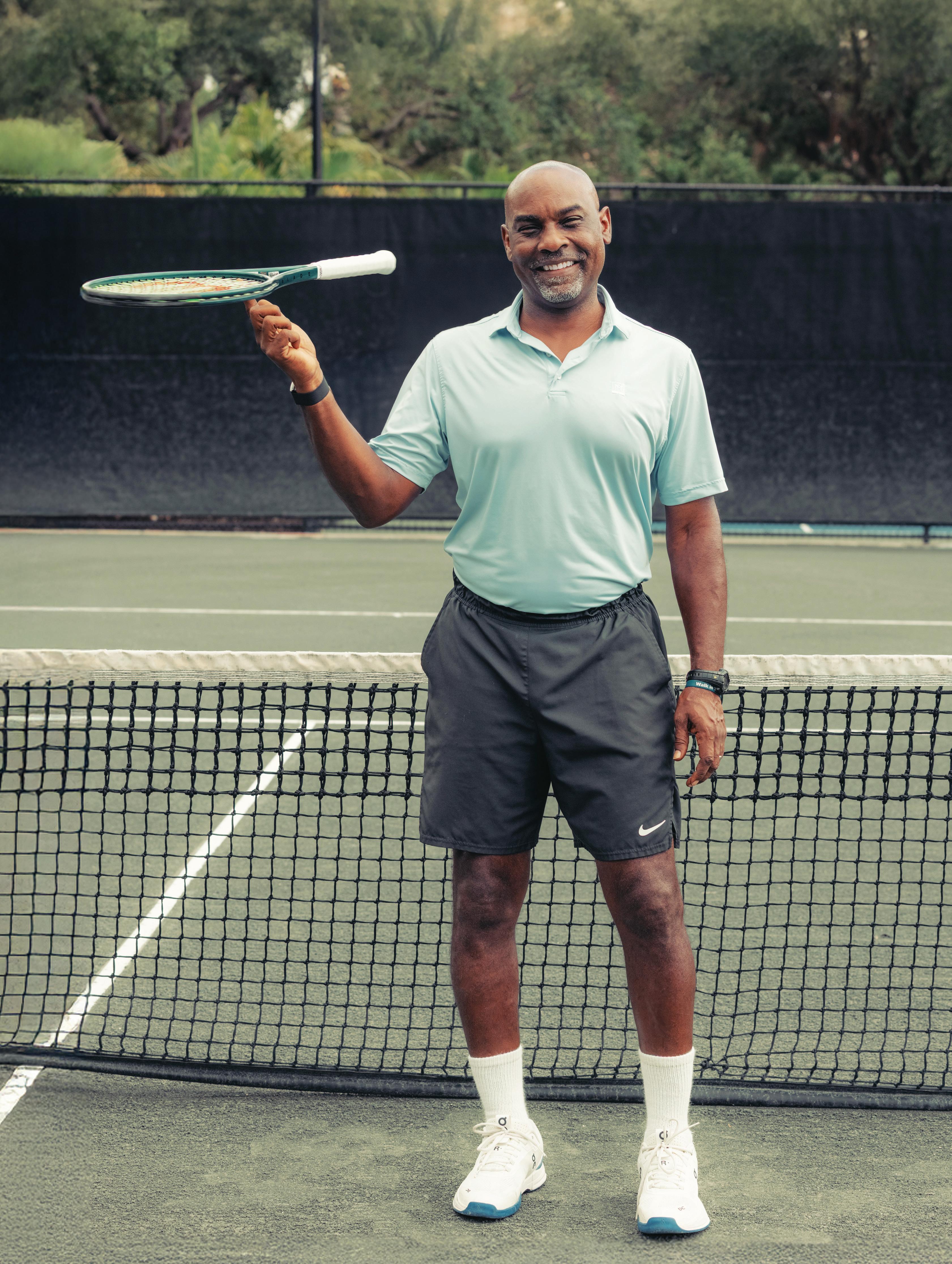
plus Onboarding That Works p. 10
Marietta CC’s Four Key Hires p.28 Bridging the Houses p. 30




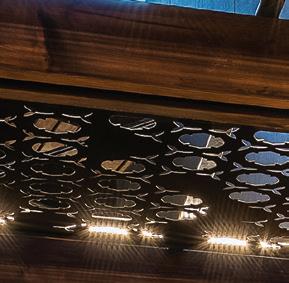
















Photography by Robb Williamson

LOOKING AHEAD THE ROB REPORT
IT SEEMS LIKE JUST YESTERDAY
when fireworks filled the air and clubs across the country hosted family events to celebrate the Fourth of July. We may be in the dog days of summer, but I know you all have one eye on the calendar and are considering how many pumpkins you need to secure for decorations, carvings and even shenanigans (Looking at you, Coyote Run Golf Course and Ivanhoe Club).
Because we put together a monthly magazine, we’re always (at least) one month ahead, too. I’m writing this in July and planning for September. The club feature is going to be fantastic, by the way, and unlike anything we’ve done before.
Beyond that, we’ve been extremely busy planning the Engagement Summit, October 5-6 at St. Andrews Country Club in Boca Raton, Fla. Have you registered yet?
I want to know what you’re planning. Are you ready for the annual MemberGuest? If you are, will there be any additions to programming this year?
Southern clubs … What do you have planned when members/snowbirds return

for the season? And how are you keeping your year-round members engaged and entertained?
We’ve been writing about quite a few clubs completely renovating their golf courses. Did you arrange for reciprocal play while your greens are out of commission? And are you doing anything interesting to keep members informed of the progress? What do you have planned when you welcome them back?
I’m asking a lot of questions because that’s my job. I’d love to share any outside-the-box ideas you may have. My role is to help you improve the experience – for members, guests, staff, and yourself. Shoot me an e-mail at rthomas@ wtwhmedia.com. Let’s talk!

EDITOR-IN-CHIEF
Rob Thomas rthomas@wtwhmedia.com
WTWH MEDIA, LLC
1111 Superior Ave., Suite 1120 • Cleveland, OH 44114
Ph: 888.543.2447
www.clubandresortbusiness.com • www.clubandresortchef.com
SUBSCRIPTION INQUIRIES
To enter, change or cancel a subscription: Web (fastest service): https://clubandresortbusiness.com
Phone: 888-543-2447 (U.S. only, toll-free)
Mail: Club & Resort Business
1111 Superior Ave., Suite 1120 Cleveland, Ohio 44114
Copyright 2025, WTWH Media, LLC











Subscriptions: Qualified U.S. subscribers receive Club + Resort Business at no charge. For all others the cost is $75 U.S. and possessions, $90 Canada, and $145 all other countries. Per copy price is $3. Club + Resort Business does not endorse any products, programs or services of advertisers or editorial contributors.
Copyright© 2025 by WTWH Media, LLC. No part of this publication may be reproduced in any form or by any means, electronic or mechanical, or by recording, or by any information storage or retrieval system, without written permission from the publisher. Club + Resort Business (ISSN 1556-13X), USPS Publication #23658 is published monthly by WTWH Media, LLC, 1111 Superior Avenue, Suite 1120, Cleveland, OH 44114. Copyright© 2025.
Periodicals postage paid at Cleveland, Ohio, and additional mailing offices.
Postmaster: Send change of address notices to Club + Resort Business, 1111 Superior Ave., Suite 1120, Cleveland, Ohio 44114.
Editorial
EDITORIAL DIRECTOR Joanna DeChellis jdechellis@wtwhmedia.com • 412-260-9233
EDITOR-IN-CHIEF, C+RB Rob Thomas rthomas@wtwhmedia.com • 216-316-5294
SENIOR EDITOR, C+RC Isabelle Gustafson igustafson@wtwhmedia.com • 216-296-2041
VP, EDITORIAL
Danny Klein dklein@wtwhmedia.com • 919-945-0726
Content Studio
VP, CONTENT STUDIO Peggy Carouthers pcarouthers@wtwhmedia.com
WRITER, CONTENT STUDIO Ya'el McLoud ymcloud@wtwhmedia.com
WRITER, CONTENT STUDIO Drew Filipski dfilipski@wtwhmedia.com
Art + Production
SENIOR ART DIRECTOR Matthew Claney mclaney@wtwhmedia.com
CREATIVE DIRECTOR Erin Canetta ecanetta@wtwhmedia.com
Sales + Business Development
SVP SALES & STRATEGY
Matt Waddell mwaddell@wtwhmedia.com • 312-961-6840
NATIONAL SALES MANAGER Amber Dobsovic adobsovic@wtwhmedia.com
BRAND LEADER Patrick McIntyre pmcintyre@wtwhmedia.com • 216-372-8112
SALES DIRECTOR Mike Peck mpeck@wtwhmedia.com • 773-859-1107
KEY ACCOUNT MANAGER John Petersen jpetersen@wtwhmedia.com • 216-346-8790
CUSTOMER SERVICE REPRESENTATIVE Annie Paoletta apaoletta@wtwhmedia.com
Leadership CEO Matt Logan mlogan@wtwhmedia.com
CHIEF OPERATING OFFICER George Yedinak gyedinak@wtwhmedia.com
VP OF OPERATIONS Virginia Goulding vgoulding@wtwhmedia.com
SENIOR VP, AUDIENCE GROWTH Greg Sanders gsanders@wtwhmedia.com



MODEL CLUBS: RACQUETS RENAISSANCE
Pickleball’s popularity boosts all racquet sports, with clubs like Mizner and Quechee thriving through member-focused programs.
(Cover photo and photo above courtesy of Mizner Country Club.)
4 ROB REPORT: Looking Ahead
8 MANAGEMENT: Bundled, Not Broken: How Clubs Can Balance HOA Mentality with Member Experience
10 MEMBERSHIP + MARKETING: Building Belonging, One Member at a Time
12 LEADERSHIP: Great People Don’t Mind Their Own Business—They Shape the World
14 CLUB PROFILE: Lakewood CC Unveils $6M Golf Course Restoration
The Westlake, Ohio club completed a comprehensive restoration of its A.W. Tillinghast-designed course, carefully orchestrated to stay true to the legendary designer’s intent.
20 DESIGN SNAPSHOT: Cheers to New Kitchen, Pool Bar at Burning Tree CC
Streamlined food and beverage service is enhancing the member experience at this Connecticut club.
28 GM TO GM: Striving for “Exceptional”
Since taking the GM role at Marietta CC, Daniel Laterza, CCM, has hired five key department heads, led a multi-million-dollar renovation, and built a team-first culture.
30 FOOD + BEVERAGE: Bridging the Gap: How Culinary Leaders Foster Front- and Back-of-House Unity
From role reversals to shared meals, see how these clubs are fostering teamwork behind the scenes.
36 PLATECRAFT: PlateCraft 2025: A Collaborative Culinary Workshop
Hosted by Cullasaja Club, this workshop challenges chefs to lead, contribute, and create at the highest level.
38 CHEF TO CHEF: Maroon Creek Club’s Adam Gordon
Maroon Creek Golf Club Executive Chef Adam Gordon reflects on 10 years of attending the Chef to Chef Conference—and why he brought his Clubhouse Manager to Baltimore.
40 WINE: Pairing Differently, Leading Boldly
At BraeBurn CC, Executive Chef Pedro Sanchez crafts wine experiences that challenge assumptions, deepen member engagement, and reimagine what “pairing” really means.
42 INDUSTRY PREDICTIONS: What changes in golf course agronomy do you see taking place over the next 5-10 years?
THE ULTIMATE RECIPE FOR F&B SUCCESS
Inspired by the best in hospitality, built for clubs.



From the pool deck and golf course to the dining room and kitchen, Cobalt delivers a seamless food and beverage experience—for both members and staff— all within our web-based, next-generation comprehensive club management system.
NEW! Mobile Ordering - Offer unparalleled convenience for both members and staff with in-app ordering and direct-to-kitchen display or print.
Dining Reservations & Events - Streamline bookings & elevate the member experience.
Table Management & Check-In - Optimize seating, enhance service flow, and streamline guest arrivals for a seamless dining experience.
Flexible Point of Sale - Unlock exceptional efficiency with tablet-ready point-of-sale and easily accessible member preferences.
NEW! Kitchen Display System - Keep orders flowing efficiently with enhanced communication and timesaving automation, all driven by customizable settings.









Bundled, Not Broken: How Clubs Can Balance HOA Mentality with Member Experience
By Rob Podley, CCM, CCE, CAM • General Manager/COO Colonial Country Club • Fort Myers, Fla.
BUNDLED COMMUNITIES are an extraordinary blend of homeownership and hospitality, governance and good times. They offer the comforts of gated living with the perks of a private club –all for the price of a single closing. But if you’ve ever sat in a budget meeting where half the room believes the F&B subsidy is too high and the other half is wondering where their “complimentary” hors d’oeuvres at happy hour went, you already know: bundled clubs walk a uniquely narrow line.
At the heart of that tightrope is a philosophical divide: should leadership focus first on running an efficient homeowners association – protecting reserves, maintaining common areas, and enforcing compliance? Or should it lean into delivering memorable, top-tier club experiences for those who actually use the amenities?
The answer, of course, is yes. To both. And that’s where things get complicated.
Some residents buy into bundled communities with dreams of Friday-night mixers, easy access to a variety of sports/ activities and elaborate holiday brunches. Others see it as a financial decision – buy a home, get bundled access to amenities, and protect property values through strong HOA oversight.
Neither mindset is wrong. But when one is prioritized at the expense of the other, the community can quickly feel out of sync.
That’s where leadership has to be especially savvy: abiding by governing documents and state statutes is nonnegotiable, but it’s equally important not to let operational precision strip the joy from the member experience. The goal isn’t to pick sides. It’s to create a culture where governance protects the lifestyle, not competes with it.
Today’s bundled clubs face a demographic juggling act. Younger members are
arriving with higher expectations for programming, technology, and casual dining. Longtime residents may be more reserved in their usage or more focused on preserving the existing status quo that they know and appreciate. And then there’s the segment of homeowners who simply don’t engage with the club at all.
Some residents want more lifestyle programming. Others want tighter budgets. And then there’s the vocal few—those who may challenge every move, often with passion that exceeds proportion. While it’s important to acknowledge and engage with all member voices, successful communities are led by boards and management teams who make strategic decisions for the collective good, not just to quiet the loudest in the room.
The solution isn’t to plan everything for everyone; it’s to plan smartly.
Programming and amenities should be designed for those who want to be
there. But they should also be managed efficiently, so those who aren’t engaging don’t feel like they’re subsidizing a country club they never signed up for. It’s a delicate balance, but one that can be achieved through thoughtful data, scaled services, and strategic communication.
When in doubt, look to industry standards. Benchmarking against peer communities can offer clarity and confidence—especially when internal perspectives are pulling in different directions. Here’s where professional management companies prove invaluable. With access to a national portfolio of bundled communities, private and daily fee clubs, they bring comparative data, operational insight, and proven best practices to the table.
But perhaps most importantly, they help boards and leadership stay focused on the bigger picture: long-term vision, financial health, and member satisfaction. While it’s easy to get pulled into daily disputes or document debates, partners like Troon can help keep everyone’s eyes on the horizon instead of the potholes.
To thrive, bundled communities must master the art of dual service. Here are a few guiding principles:
1. Follow the Law, Then Lead with Heart Florida statutes and governing documents are the foundation. But they shouldn’t be the ceiling. Assuming compliance is achieved, focus should shift to enhancing the member experience and creating meaningful value for residents.
2. Communicate Clearly, But Don’t
Overwhelm
Transparency is critical, but so is tone. Not every operational detail needs to make it into a club newsletter. Provide enough clarity to earn trust, without accidentally dragging members into the weeds.
3. Right-Size Amenities
Design for usage. Seek feedback as the gift it is. Avoid the temptation to overbuild or overstaff in hopes of reaching the un-
“The goal isn’t to silence one perspective in favor of another. It’s to build a culture that respects compliance, celebrates lifestyle, and unites residents across all levels of engagement.”
reachable member. Offer quality experiences to those who are engaged, without overburdening those who aren’t.
4. Protect Staff and Support Volunteers
Serving a bundled community—whether as a staff member or board/committee volunteer—is not for the faint of heart. Empower them, protect them, and give them the tools to succeed. A well-supported team is essential for maintaining unity and momentum.
5. Keep the Culture Front and Center
Ultimately, the strength of a bundled community lies in its culture, not its covenants. Build connection, foster inclusion, and remind residents why they chose this lifestyle in the first place.
Bundled communities offer an incredible lifestyle, but only when the operational gears and social experience move in tandem. Harmony is the new luxury.
Governance without joy breeds frustration. Hospitality without oversight risks instability.
The goal isn’t to silence one perspective in favor of another. It’s to build a culture that respects compliance, celebrates lifestyle, and unites residents across all levels of engagement.
Because in the end, the best bundled communities don’t just check the financial boxes or deliver on square footage, they build something more enduring: a culture of trust. That begins with a board that leads by example. When leadership treats one another with respect and works collaboratively, it sets the tone for the entire organization. Staff feel it. Members feel it. And the community is stronger for it. Governance and hospitality can and must coexist. When they do, residents don’t just live in the community. They believe in it. And employees stick around to be part of it.
Building Belonging, One Member at a Time
Director of Membership & Marketing Danita Osborn’s peer-driven onboarding strategy at Shadow Wood CC strengthens connection and long-term engagement.
By Joanna DeChellis • Editorial Director

AS DIRECTOR OF MEMBERSHIP & Marketing at Shadow Wood Country Club (Bonita Springs, Fla.), Danita Osborn has spent nearly 15 years shaping how new members become part of the fabric of the club. What began as trial and error has evolved into a dynamic, peer-driven onboarding program that not only connects people quickly but sets the tone for long-term satisfaction. At this year’s Engagement Summit (see pg. 35), she’ll share the framework behind that success and why getting onboarding right matters more than ever.
Club + Resort Business (C+RB): How did you get your start in club management?
Danita Osborn (DO): I’m originally from Massachusetts, but I’ve been in Florida for 20 years now. I studied Resort and Hospitality Management at Florida Gulf Coast University and interned at Shadow Wood CC during college. After spending a few years at another club, I returned to Shadow Wood just as it was transitioning from developer-owned to member-owned. They offered me the role of Director of Membership, and while I was still early in my career, they trusted me to grow into the position—and I have.

Danita Osborn, Membership & Marketing Director of Shadow Wood CC and one of the speakers at the upcomign C+RB Engagement Summit (see pg. 35), developed a peer-driven onboarding program that helps new members feel welcomed, connected, and engaged from day one.
New-member mixers at Shadow Wood CC are designed to spark connection. Events like this give members a chance to engage with one another and with staff in a relaxed, welcoming setting.

C+RB: You describe your onboarding program as a product of trial and error. What shaped the version you have today?
DO: In the early days, we assumed that the best way to help new members feel at home was to introduce them to longtime members and let the culture absorb them. But that approach didn’t reflect how people actually engage. Many of our longtime members already had their friendships and rhythms, and while they weren’t unfriendly, they weren’t actively looking to expand their circles either. Once I recognized that dynamic, I shifted the focus to creating meaningful connections among the new members. They were the ones eager to meet people, try new things, and build their own sense of place. That pivot away from legacy integration and toward peer connection was what made the difference.
C+RB: Once you shifted your approach, how did you begin to redesign the onboarding experience?
DO: We developed a two-year new member program. It always includes a mix of people who are brand new and others who joined a year or so earlier. That second group becomes the welcoming committee. They remember what it felt like to be new, and they are still in a similar phase of life: newly retired, empty nesters, or recently relocated. The goal is to create a community within the club that supports a smooth integration into the larger membership.
C+RB: How do you know when someone is fully integrated?
DO: At the end of their second season, we ask. If they feel fully integrated, we ask them to become ambassadors for the next group. If not, we keep them in the program. I believe someone is a new member until they stop feeling like one. The timeline should reflect that.
C+RB: What are the most common roadblocks in onboarding?
DO: The biggest challenge is participation. You can offer great programming, personalized emails, engaging events, but if members don’t engage, they won’t make connections. We work hard to make it easy to plug in, but ultimately, they have to choose to show up.
C+RB: How do you bring those peer-driven connections to life through programming?
DO: It’s all about collaboration. I work closely with department heads to design events that feel natural to each part of the club. For example, we did a charcuterie board workshop for the women’s group, led by our chef, where everyone built their own boards and took them home on Shadow Wood–branded platters (photo above right). For the men’s event, our chef suggested a bourbon and barbecue experience, complete with smokers on the patio and a bourbon tasting coordinated by our F&B team. Our golf pros also host a social where members rotate through different

hitting stations, each staffed by one of our pros (shown above left). These events give new members a chance to interact with each other and with our team, while exploring everything the club has to offer.
C+RB: What makes onboarding such an important topic for clubs right now?
DO: We’ve seen a huge influx of new members recently, especially here in Florida, and many of them are joining a club for the first time. They don’t always know how to navigate club life or understand the culture that already exists. If that gap isn’t addressed early, it can lead to frustration for both the member and the club. Onboarding is about more than policies and procedures. It is about helping people feel like they truly belong.
C+RB: As you prepare to speak at the Engagement Summit, what do you hope attendees will take away?
DO: I hope they leave with ideas they can put to use right away. Whether it is a sample email series, an event concept, or a fresh way to think about member engagement, I want them to feel like they have something specific and actionable to bring back to their own clubs. Those are always the most valuable takeaways when I attend events. Something clear and usable that sparks momentum. C+RB

IN TIMES OF COMFORT, it’s easy—tempting even—to stay in our lane. To mind our own business. To keep our heads down, avoid the noise, and hope someone else will step in. But these are not comfortable times. We are living in a world that demands more—more courage, more clarity, and more conviction from those who dare to lead.
The quote, “Great people don’t mind their own business—they do the shaping of the world,” is not just poetic sentiment. It’s a challenge. A signal flare for those who feel the weight of responsibility to make things better, even when it’s hard. Leadership today isn’t about staying behind the curtain or waiting to be invited to the table. It’s about choosing action when silence would be easier. It’s about disrupting comfort for the sake of progress.
THE MYTH OF “STAYING IN YOUR LANE”
We’ve been taught that greatness is about excelling within the boundaries of our roles. Be great at your job. Focus on your family. Stay in your lane. But history has shown us that those who truly shaped the world—those who drove innovation, challenged injustice, and opened doors— didn’t stay in their lane. They crossed boundaries. They entered spaces where they “didn’t belong.” They acted when others remained still.
They spoke when silence was expected. They moved when inaction was safer. They led not because they had permission, but because they saw something that needed to be done—and did it.
Great People Don’t Mind Their Own Business— They Shape the World
By Jarrett Chirico, DCA • Director of Racquets
WE NEED LEADERS WHO WILL STEP IN
We are at a crossroads in every field— education, healthcare, hospitality, the environment, and beyond. Our systems are strained. Our communities are hurting. The future is uncertain. And in this moment, we need leaders, true leaders, who are willing to step in.
We need people who will say, “This isn’t working and I’m going to help fix it.” People who will speak up in rooms where others stay quiet. Who will mentor when they’re tired, and lead with integrity even when it costs them. Leadership is not about seniority or title. It’s about urgency. It’s about seeing what’s needed and stepping forward.
LEADERSHIP
IS A VERB, NOT A TITLE
Leadership is not found on a nameplate. It isn’t granted by popularity or tenure. It’s demonstrated through action. Each day, each moment, leadership is earned. It begins the moment you stop waiting for someone else and start becoming the someone.
It means calling out injustice, even when it’s inconvenient. Investing in people others overlook. Being the lone voice of truth in a room full of silence. It means entering through a door not meant for you so you can hold it open for someone else.
“YOU DON’T BELONG HERE” IS A SIGNAL TO STAY
When someone says, “You don’t belong here,” it’s rarely about you. It’s about fear. Fear of disruption. Fear of change. But to
a real leader, those words should be fuel. If something inside you stirs when you hear them, that’s your sign. That’s your assignment.
Because what they really mean is that you’re threatening the status quo. And that’s exactly what great leaders do—they disrupt what is to create what could be. Not for power. Not for recognition. But because they care too much to stay quiet.
SILENCE IS TOO EXPENSIVE
There is a cost to silence. Every time we hold back, we tell those around us that inaction is acceptable. Every time we delay, we give away our momentum. Every time we choose comfort over courage, we miss the opportunity to lead.
Yes, leadership comes with risk. You may lose popularity. You may be misunderstood. You may fail. But what’s the alternative? A future shaped by those who chose silence?
We cannot afford that. Not now. Not ever.
A CALL TO THE BOLD
This is not the moment to shrink. This is the moment to rise.
You don’t need a title. You don’t need permission. You only need the courage to act. Because great people don’t mind their own business—they mind the business of the world. They step in when others step back. They speak when others go quiet. They lead not because the path is clear, but because the mission is urgent.
And now—more than ever—we need them.
We need you.
Royal Oaks Country Club • Dallas, Texas


WHAT IS THE C+RB ENGAGEMENT SUMMIT?
The C+RB Engagement Summit is a high-impact, two-day gathering of the club industry’s membership and marketing leaders. Held October 5 through 6, 2025 at St. Andrews Country Club in Boca Raton, Fla., this event brings together membership and marketing directors for candid conversations around sales, onboarding, retention, and private club growth.
WHO ATTENDS?
Attendees represent private clubs seeking ways to strengthen engagement, refine marketing, and support long-term growth.
Audience Snapshot: Membership Directors
• Marketing Leaders
• Communications Executives
• General Managers Clubhouse and Operations Managers
SPEAKERS

The Industry Pulse: Membership & Marketing Trends That Matter
Presented by: Jason Becker, CEO Golf Life Navigators
OCTOBER 5 - 6

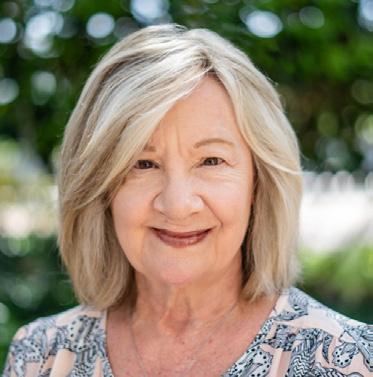


Membership Momentum: Proven Sales and Marketing Plays for Private Club Growth
Presented by: Stephanie Valdes, Director of Membership & Marketing, Willoughby Golf Club
Denise Saari, Membership, Marketing and Communications Manager, Addison Reserve Country Club
Partner Perspective: What Vendors Are Seeing and Solving
Presented by: Melissa Hansen, Director of Membership and Marketing, The Club at Olde Cypress; C+RB Engagement Summit Conference Coordinator
Onboard Like a Pro: A First-Year Framework that Delivers
Presented by: Danita Osborn, Director of Membership & Marketing, Shadow Wood Country Club
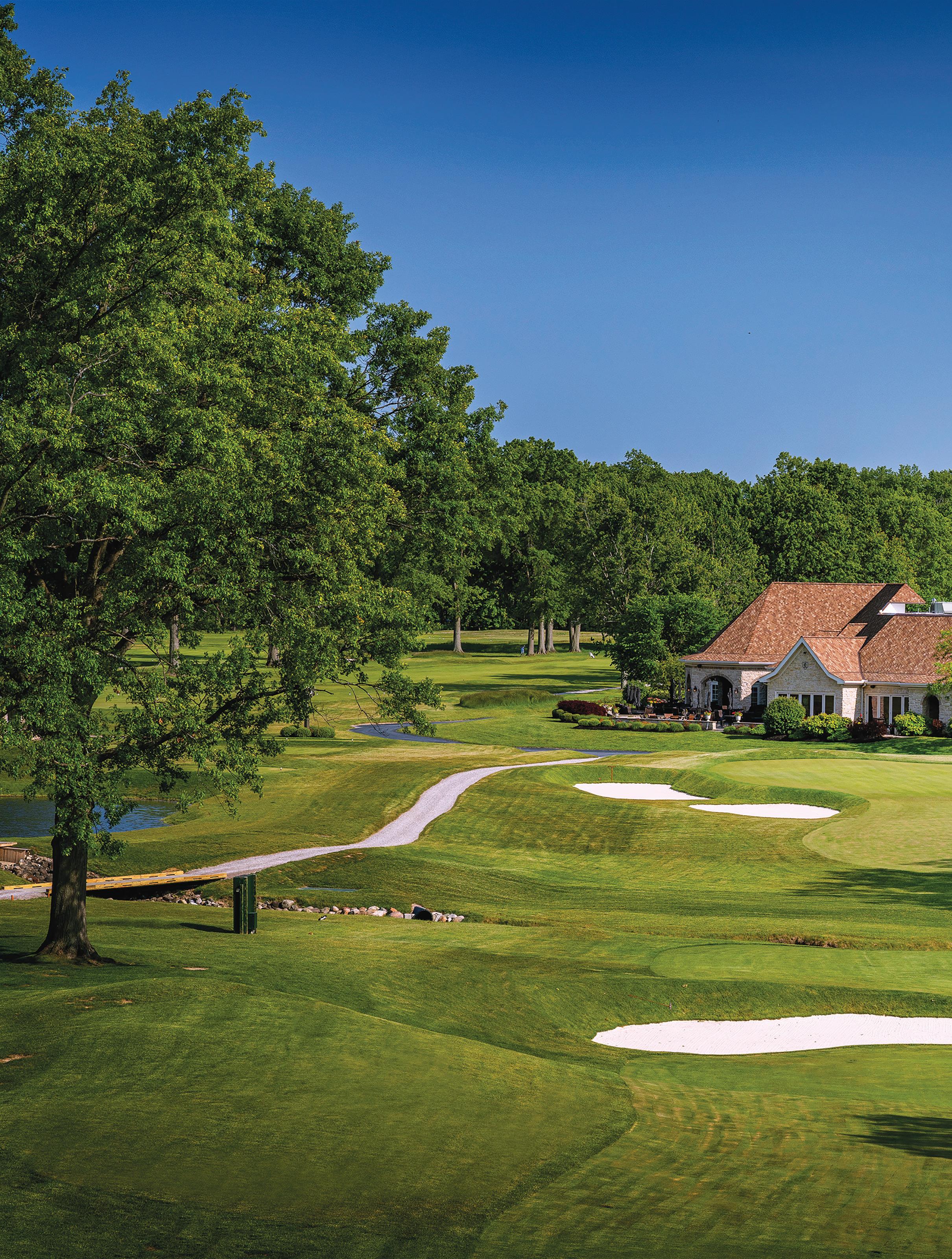
Lakewood CC Unveils $6M Golf Course Restoration
The Westlake, Ohio club completed a comprehensive restoration of its A.W. Tillinghast-designed course, carefully orchestrated to stay true to the legendary designer’s intent.
By Rob Thomas • Editor-in-Chief
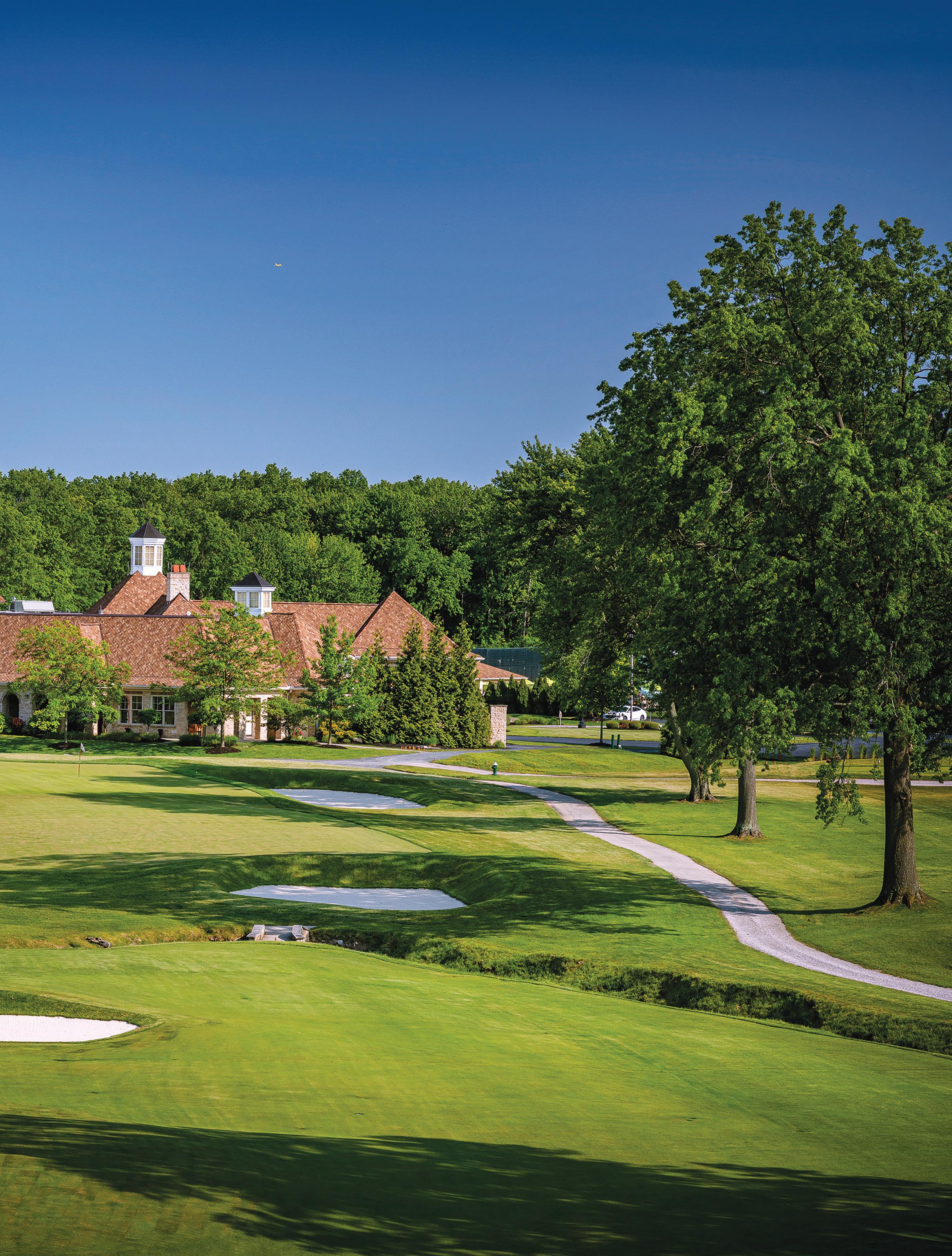

LAKEWOOD COUNTRY CLUB IN WESTLAKE, OHIO, is entering a bold new chapter in its storied history. With the completion of a $6 million renovation, the club has restored its A.W. Tillinghast-designed golf course to its original architectural brilliance, modernized to meet the demands of today’s game while honoring the strategic elegance of its past.
Spearheaded by course architect Keith Foster, the project is more than just a physical upgrade. It’s a cultural and strategic reawakening.
“This project is a defining moment in the modern history of Lakewood Country Club,” says Alfredo C. Hildebrandt, General Manager and COO (left). “It not only honors our rich past but also boldly steps into our future. Restoring A.W. Tillinghast’s original vision reestablishes us as one of the premier golf experiences in the region – a club rooted in tradition yet built to thrive in the decades ahead.”

A VISION REALIZED
Originally opened in 1921, Lakewood’s Tillinghast design has long been cherished by golf purists. But as the game evolved – with new equipment, longer hitting distances, and changing player expectations – the course struggled to keep pace. Recognizing the need to restore its architectural soul while enhancing its
strategic challenge, the club embarked on a 10-month renovation of all 18 holes, carefully orchestrated to stay true to the legendary designer’s intent.
Under Foster’s leadership, the team prioritized the reintroduction of signature Tillinghast features like bold bunkering, strategic angles, and iconic elements such as the Great Hazard and Lion’s Mouth.
Green complexes and tee boxes were expanded by 30%, offering more variety and a broader spectrum of shot values.
“We adhered to Tillinghast’s original routing, making it a true walking course once again,” says Hildebrandt. “The end result is a course that feels both historically authentic and thoughtfully modernized for today’s game.”

Lakewood’s 1921 A.W. Tillinghast golf course underwent a 10-month renovation to restore its original design, reintroducing signature features like bold bunkering and strategic elements. Green complexes and tee boxes were expanded by 30%, offering more variety and a broader spectrum of shot values.
Lakewood Country Club enlisted golf course architect Keith Foster to restore its A.W. Tillinghast course with a $6 million renovation, blending historic design with modern golf standards.
LEADING THROUGH CHANGE
Any significant restoration project comes with risk, and Lakewood’s leadership team was keenly aware of the challenges – financial, political, and logistical –that lay ahead. For Hildebrandt, who joined the club seven months before the project began, success depended on uniting a diverse membership around a shared vision.
“We were at a defining moment where bold, decisive action was necessary,” he explains. “Transparency, education, and inspiration became our guiding principles. It wasn’t just about communicating what we were doing but why it mattered for the long-term health of our club.”
Town halls, on-course tours, and open dialogue helped members understand the project’s purpose and scope. The board, described by Hildebrandt as “passionate advocates,” played a critical role in reinforcing the club’s commitment to excellence and long-term success.
Despite the disruption of a full course closure, the club outperformed its financial targets, exceeding budget projections by nearly $1 million. “That’s a testament to both prudent management and the unwavering support of our members,” says Hildebrandt. “The membership stayed highly engaged and actively supported the club, resulting in record-breaking revenue across all key line items.”
HEROES BEHIND THE SCENES
While Foster brought the architectural blueprint to life, the execution depended heavily on in-house leadership. Head PGA Golf Professional Tim Perin and Course Superintendent Aaron Archambault played vital roles throughout the project.

Club Insurance FORE




“Tim played a crucial role in educating members and showcasing the course, ensuring everyone fully understood the scope and significance of the restoration,” says Hildebrandt. “Aaron was the busiest man at Lakewood Country Club. He was the central hub, coordinating with contractors, consultants, and suppliers – while simultaneously maintaining the course for three months.”
The entire staff – from administration and accounting to golf and food & beverage – contributed to the seamless execution. Their efforts ensured that members remained engaged, even without a playable course.
“We turned the disruption into an opportunity,” Hildebrandt says. “We kept members informed and excited through creative programming, tours, and regular updates. What worked best was making our members feel like active participants in the transformation—not just spectators.”
REACTIONS AND RECOGNITION
Now that the course has reopened, the response has been overwhelmingly positive.
“Members are in awe of the transformation,” Hildebrandt shares. “They recognize that the course is now significantly more challenging yet immensely rewarding. It’s a true testament to Tillinghast’s original design elevated for the modern game.”
More importantly, the course has redefined Lakewood’s positioning in the competitive Cleveland-area golf market.
“We’ve transformed from one of the area’s oldest clubs into one of its most architecturally striking and vibrant golf hubs,” he says. “This project has significantly boosted our profile, generating buzz and turning heads well beyond Northeast Ohio.”
That momentum has shifted Lakewood’s approach to membership. Rather than actively recruiting, the club is focused on curating a more intimate, elevated experience for those already part of its community.
“We are approaching the sweet spot –a membership size that ensures exclusivity without sacrificing access to the course and amenities,” says Hildebrandt. “Our goal is to create an environment where every member feels the distinct value of belonging to a premier club.”
LOOKING AHEAD
Beyond the course, Lakewood’s future is ripe with possibility. The club sits on 36 acres of undeveloped land … an asset Hildebrandt views as central to the next chapter.
“This restoration opens the door to even greater possibilities,” he says. “New amenities, future expansion, and revenue-generating opportunities are all on the table. With the right board governance and a young, passionate team at the helm, we are positioned to set a new standard for what a private club can be in Northeast Ohio.”
The newly restored course will also serve as a cornerstone for enhanced
Alfredo C. Hildebrandt, General Manager/COO, credits his team for the club’s success. From left: Holly Bzovi, Director of Membership & Marketing; Andrew Higgins, Assistant Golf Course Superintendent; Tom Hutchinson, Clubhouse Manager; Aliya Voldrich, Director of Special Events; Hildebrandt; Aaron Archambault, Golf Course Superintendent; Tim Perin, PGA Head Professional; Erika Manown, Merchandiser Manager; Dianne Morgan, Controller; Kyra Bradley, Director of Food & Beverage; and Geoffrey Sowl, Executive Chef.
Lakewood’s golf course restoration unlocks its 36 undeveloped acres for future amenities and revenue, aiming to redefine private clubs in Northeast Ohio. This legacy project enhances events and member recruitment.
events and tournaments, as well as a powerful recruitment tool for the club’s next generation of members.
“We are now offering a golf experience that matches the warmth and excellence of our culture,” Hildebrandt says. “And that is a game-changer.”
WORDS OF WISDOM
For other general managers considering a similarly ambitious undertaking, Hildebrandt offers simple yet powerful advice.

“Be bold – but first, build trust. Vision matters, but execution is everything,” he offers. “Engage your people early, surround yourself with experts, communicate relentlessly, and never lose sight of why you started. When done right, it is more than a project … it is a legacy.”
As Lakewood Country Club steps
confidently into its second century, that legacy is already taking shape – etched into every restored bunker, recontoured green, and walkable fairway. A century after A.W. Tillinghast first left his mark on Westlake, his vision has been reborn – stronger, sharper, and ready for the future. C+RB


Cheers to New Kitchen, Pool Bar at Burning Tree CC

Streamlined food and beverage service is enhancing the member experience at this Connecticut club.
By Pamela Brill • Contributing Editor
SHAKEN, NOT STIRRED , makes for the best espresso martini. It’s a process that has been simplified and perfected at a multi-function kitchen station, part of a larger culinary upgrade completed at Burning Tree Country Club this past April. The Greenwich, Conn., facility underwent a kitchen restructuring and added a pool
bar as the first part of its aquatics and recreation master plan. Both enhancements have already proven their value during a busy summer season.
The decision to renovate Burning Tree’s outdated cooking space was prompted by a need for greater functionality. “The club’s kitchen was more than 20 years old and no
longer met the efficiency standards required to support our growing member demand,” says General Manager Harris Coble. “While the renovation did not expand the [main kitchen’s] physical footprint, the space was entirely reconfigured to optimize layout, improve workflow and accommodate modern kitchen equipment and systems.”
A noticeable part of the renovation sits right outside the kitchen itself, in the grille room. The aforementioned multifunction kitchen station provides a dedicated touchpoint for staging continental breakfasts, buffets and interactive dining experiences, including sushi stations, oyster and raw bars and – yes – espresso martini bars. Coble credits this space for being able to accommodate increased demand for banquet and a la carte dining, without disrupting their respective executions.
To support its growing membership and special events calendar, Burning Tree’s 2,500-sq.-ft. kitchen has maximized its floor plan with equipment upgrades and expanded prep and plating areas. In addition to new combi and convection ovens, commercial ranges and a tilt skillet, the HVAC system and hood ventilation were redesigned for optimal performance. Outdated quarry tiles were swapped out in exchange for sustainable commercial flooring, and energy-efficient lighting was installed.
These myriad improvements to the kitchen’s backbone have translated to greater operational efficiency, which has improved overall service. According to
Design Snapshot
BURNING TREE
COUNTRY CLUB
Greenwich, Conn.
Architect and Builder: JBD/JGA, Pawtucket, R.I.
Kitchen equipment supplier: HAFSCO, West Haven, Conn.
Commercial ranges: Jade
Convection ovens: Blodgett
Combi ovens: Rational
Tilt skillet: Rational iVario
Flooring:
Protect-All (kitchen, behind the bar); Lunada Bay Tile (front of the bar)
Lighting: Visual Comfort & Co. (pool bar)
Furniture: Bedford Outdoor Bar Stools

Coble, ticket times have been “significantly reduced,” generating a 35-percent boost in F&B sales in the first two months, compared to the same period last year.
COCKTAILS AND CONVERSATION
Burning Tree’s successful kitchen transformation helped pave the way for a new pool bar, part of a broader initiative to “elevate the member experience across multiple areas, including poolside amenities…,” notes Coble. Whether enjoying a post-swim cocktail or drinks before dinner, members and their guests are taking full advantage of this social hot spot.
Generous accommodations allow for a maximum occupancy of 30 patrons: 14 directly at the bar and 16 seated at surrounding high-top tables. (Coble credits the latter for creating visual contrast with the adjacent patio’s dining-height chairs.) Powder-coated aluminum framed stools were chosen for their durability, while reticulated foam cushions offer comfort and proper drainage during inclement weather. Upholstered seats in a cream and blue fabric mesh well with the bar’s ceiling and tile tones.
Despite the casual nature typically associated with a poolside watering hole, the bar itself exudes sophistication and elegance. A Taj Mahal quartzite coun-
tertop with soft veining is extended by a full-height backsplash, while the backbar features liquor storage with a bronzefinished metal mesh roll-down grille. Overhead, two television sets installed into the millwork provide further entertainment for viewers. “The overall look is clean and modern, in keeping with the transitional design concept,” notes Coble.
Because of the pool’s proximity to the bar area, non-slip porcelain flooring ensures a safe environment. Varied lighting styles, including decorative lighting at the backbar, to cove lighting around the perimeter, create a relaxed vibe. Additional ambient downlighting provides necessary illumination without detracting from the mood.
A modest-sized, but impactful addition, Burning Tree’s pool bar has found tremendous favor with its membership. “The bar has transformed the poolside experience, turning a previously underwhelming amenity into one of the most popular and active social spaces on campus,” says Coble. “This renovation marks a significant investment in the member experience, emphasizing operational efficiency, safety and elevated design across both the kitchen and poolside bar. The early results speak for themselves—with increased sales, improved workflows and outstanding member feedback.” C+RB

Photo Courtesy of Mizner Country Club
RACQUETS RENAISSANCE
Pickleball’s popularity boosts all racquet sports, with clubs like Mizner and Quechee thriving through member-focused programs.
By Rob Thomas • Editor-in-Chief
A RISING TIDE LIFTS ALL SHIPS. The massive popularity growth of pickleball has proven to boost all racquet sports, with tennis enjoying a renaissance and padel gaining steam across the United States.
Mizner Country Club in Delray Beach, Fla., and Quechee (Vt.) Club are providing the blueprint for a successful racquets program – keeping existing members active, while introducing the next generation to the court.
SETTING THE SUNSHINE STATE STANDARD
Mark A. Bado, MCM, CCE, General Manager and COO at Mizner Country Club, and his team have made a concerted effort to bolster racquets.
“Over the past several years, we have invested time and resources into expanding our racquets program at Mizner to accommodate current trends and create programming that is accessible to all levels of playing ability,” Bado says. “Under the skillful leadership of Director of Racquets Vernon Gettone and his incredible team, we knew our membership appreciated the advances we made in the racquet programming, but it is always reaffirming to have a reputable third party speak so highly of this area of the club.”
Gettone credits the professionals working with him for the program’s success.
“Building community at Mizner starts with building the right team,” he explains.
“I’ve made it a priority to empower our staff—to trust them, give them the space
to lead, and foster a culture of collaboration. That kind of internal support and cohesion creates a positive energy that members naturally connect with.”
But it wouldn’t be possible without the members.

Mizner CC’s successful racquets program, led by Director of Racquets Vernon Gettone (opposite page), expands offerings for all skill levels. Gettone credits his empowered team and community-building focus for the program’s overwhelmingly positive reception.


“Member engagement is also at the heart of what we do. Whether it’s through competitive play, social mixers, themed events, or level-specific clinics, we’re always creating opportunities to connect with our members in meaningful ways,” Gettone says. “When people feel seen, supported, and part of something larger than themselves, the sense of community grows—and that’s when a program truly thrives.”
Change doesn’t have to be earth-shattering to be effective.
“At Mizner, one of the most impactful changes has been our commitment to truly listening, understanding, and vetting member feedback,” Gettone says. “We’re in a feedback-rich environment, and it’s essential to not only hear what members
are saying but to understand the why behind their input.
“Whether it’s through personal conversations, phone calls, or committee meetings, every touchpoint gives us insight into how we can better serve our community,” he adds. “This approach has allowed us to shape programming and events that resonate, resulting in stronger engagement and higher participation.”
Another key factor has been the addition of three dedicated pickleball courts.
“Pickleball’s accessibility and social nature have opened the doors to a wider demographic and allowed us to diversify our offerings,” Gettone explains. “These courts have quickly become a hub of activity, fostering a sense of community while
Mizner Country Club’s racquets program tailors diverse offerings to all skill levels. By actively listening to members, the team provides engaging, high-quality experiences, from junior leagues to competitive play and pickleball.
driving consistent growth in participation across all racquet sports.”
Mizner’s mission “to provide members, their families, and their guests with gracious personalized service and excellent social and recreational amenities” fits perfectly within the racquets program, according to Bado.
“Vernon Gettone and his team create racquet programming that encompasses all levels of playing abilities and meets members’ needs for competitive or recreational environments on the club’s courts,” Bado says. “From Mizner kids leagues to various levels of interclub leagues, from recreational pickleball to private/group lessons, Vernon’s team listens to what the membership is seeking in its racquets program and maintains the highest quality facilities where the members can enjoy their time on the court.”
Considering the wide array of players – from recreational to competitive – Gettone and his team can’t rely on a one-size-fits-all approach.
“At Mizner, we focus on meeting members where they are. Our programming is intentionally broad—ranging from level-
Director of Racquets Vernon Gettone emphasizes that member engagement through diverse programming and active listening drives Mizner Country Club’s success. The addition of pickleball courts has further boosted participation and community.
based clinics and competitive leagues to junior development tracks and dedicated pickleball offerings,” he says. “It’s important that every member, no matter their age or skill level, feels like there’s a place for them on our courts.
“The key is staying flexible and responsive,” Gettone continues. “We make a point to actively listen – through conversations, surveys, and daily interactions – and we’re not afraid to adjust our programming to better align with members’ interests, goals, and evolving needs. That adaptability keeps our offerings fresh, inclusive, and engaging for everyone.”




Striving for “Exceptional”

Since taking the GM role at Marietta CC, Daniel Laterza, CCM, has hired five key department heads, led a multi-million-dollar renovation, and built a team-first culture.
By Joanna DeChellis • Editorial Director
WHEN DANIEL LATERZA, CCM, stepped into the General Manager role at Marietta Country Club (Kennesaw, Ga.), COVID restrictions were still in place, member expectations were rising, and several key leadership roles were vacant or in transition. Many new GMs might have seen that as overwhelming. Laterza saw opportunity.
From the start, he challenged his team not to aim for excellence, but to go beyond it. “Excellence is the baseline now,” he says. “We need to be exceptional.” Guided by a leadership philosophy shaped by trusted mentors, Laterza began assembling a team, investing in the property, and setting new standards across every department.
In this conversation, he shares how he approached those early decisions, what he looks for in strong leaders, and why culture is critical.
Club + Resort Business (C+RB): You stepped into the GM role at Marietta CC in late 2020. How did you approach those early months?
Daniel Laterza (DL): I started here in December 2020, right in the middle of COVID, and the club was going through a period of change. It was my first GM role, and a few key positions were either open or nearing transition. The timing gave me the chance to shape the leadership team early on and start setting the direction for where we wanted to go.
C+RB: Before we get into what you’ve done at Marietta, let’s go back a bit. You’ve worked at respected clubs like East Lake, Ansley, and Dunwoody. What guided your career decisions, and how has that shaped the way you lead today?
DL: Honestly, I think it goes back to who I worked for. That’s something I always tell people coming up in the industry. It’s easy to get caught up in the name of the club, the job title, or the pay. But I always focused on who I was going to work for and whether that person would help me get to the next level. I looked for people who were respected and who would actually spend time with me and help me with what I was doing well and also where I needed to grow.
C+RB: What lessons from your earlier roles did you bring with you to Marietta?
DL: One of the biggest things was the importance of connecting with staff. Culture is everything. Attracting and retaining top talent means building a culture where all employees are heard and respected. I have lunch a couple times a week with line staff. I want them to know I value them as much as I value our board members. That changes how people show up.
C+RB: How would you describe your leadership style?
DL: I would describe my leadership style as servant leadership. I believe in hiring strong, capable individuals and then empower-





ing them to do their jobs with autonomy and confidence. My role is to support, guide, and remove obstacles so they can succeed. I focus on listening, fostering trust, and creating a collaborative environment where people feel valued and motivated to grow— both individually and as a team.
C+RB: You’ve hired a new executive chef, director of golf, chief engineer, clubhouse manager and director of communications since joining. What were you looking for in each of those roles?
DL: I look for team players who are strong communicators, creative thinkers, and confident risk-takers—individuals with high emotional intelligence who lead with empathy and integrity. The member experience has to be where it should be, and that requires leaders who will take us to the next level.
C+RB: Let’s start with the chief engineer. That role was vacant when you came on, right?
DL: That role turned over right as I was coming in. There wasn’t anyone in place when I started, so it was a priority to fill that position. I reached out to my network and was able to connect with someone I had worked with years ago at Ansley. He knew the demands of the job, and I knew he’d be a good fit for the culture we were building. His name is Scott Bradley, and he’s done a great job since coming on board.
C+RB: And the clubhouse manager?
DL: I knew I needed a strong number two and had a perfect opportunity with this position being vacant. I conducted the search myself by reaching out to my network. I was fortunate to find out that Kyle Baxter, who I have known for many years, was interested and ready for his first club manager job.
[Baxter] had an impressive club and leadership background and I knew his personality and work ethic could help the club advance to the next level. I could not be prouder of Kyle as he has brought structure to the F&B side through training, clear processes, and consistency around hiring.
C+RB: What about the executive chef and director of golf?
DL: We handled the chef search internally. I put together a small committee, cast a wide net, and started with Zoom interviews. We narrowed it down to three finalists and brought them in for
tastings. I also made sure our department heads were part of the process. Colin Quirk has proven to be a talented culinary leader who aligns seamlessly with our culture.
For the director of golf, we worked with the same search firm that placed me at Marietta. Through them, we were lucky to find Troy Spencer, who stood out for his leadership style and experience at high-end clubs.
C+RB: You’ve also added a director of communications. What led to that hire, and how has the role evolved?
DL: We added a director of communications to elevate our approach to member messaging. As expectations grew, we saw the need for a dedicated leader to drive strategy, consistency, and impact. Since joining, Amy Brecker has improved processes, aligned communications across departments, and brought fresh ideas that help us better engage members of all ages.
C+RB: You’ve truly built a solid leadership team. How do you support their continued growth?
DL: This is one of my top priorities. I invest in their development by providing opportunities for strategic involvement, encouraging ongoing learning through workshops or mentorship, and giving them the autonomy to lead and make decisions. I also prioritize regular check-ins to provide feedback, listen to their goals, and ensure they feel challenged and supported. Ultimately, I aim to create an environment where they can thrive both professionally and personally.
C+RB: Your staffing changes have clearly strengthened the club. Beyond people, what operational changes have had the biggest impact during your time at Marietta?
DL: The biggest impact has been the investment back into the facilities. Since 2021, including the current renovation, we have invested almost $15 million. We started with the pool kitchen and outdoor pool dining facility. We just finished updating each area of the clubhouse and now are in the middle of a golf course renovation, which will include new fairways, greens, and drainage. To help drive these projects we completed a Campus and Golf Course Master Plan. We looked at what we could do immediately and what we needed to build toward over five years. C+RB
Amy Brecker, Director of Communications Colin Quirk, Executive Chef
Kyle Baxter, Clubhouse Manager
Scott Bradley, Chief Engineer
Troy Spencer, Director of Golf
Bridging the Gap: How Culinary Leaders Foster Front- and Back-of-House Unity
From role reversals to shared meals, see how these clubs are fostering teamwork behind the scenes.
By Isabelle Gustafson • Senior Editor
SUPERSTITION MOUNTAIN GOLF & COUNTRY CLUB Director of Food and Beverage Josh Nylin got his taste for front of the house around COVID, of all times. He started at Las Sendas Golf Club in Mesa, Ariz., as Executive Chef, and in 2020, he transitioned to General Manager.
“My F&B director at the time said, ‘Can you manage the operation until we figure out what we’re doing in the front of the house?’ So I managed the kitchens through the sous chefs, and I was helping manage the dining room out on the floor. And it gave me a taste for that side of it.”
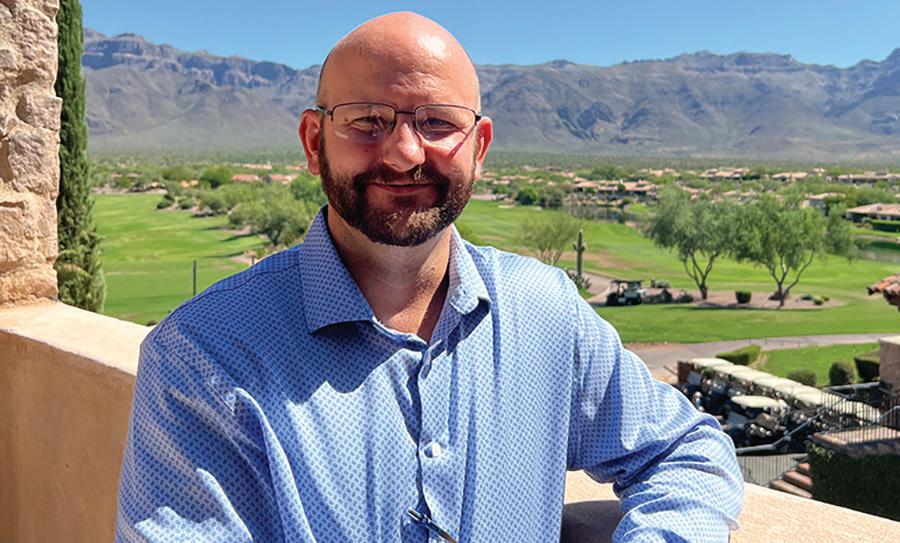
A year later, though, Superstition Mountain G&CC in Gold Canyon, Ariz., reached out with an Executive Chef opening. It was an offer Nylin couldn’t pass up and an opportunity to affect major change.
“I came on in the middle of the season. My first week, I was in the HR office with a server and a cook, and they were screaming at each other,” Nylin says. “Looking back at it, I probably could have fired them both. But I looked at the situation—they’re burnt out, they’re tired, they’re exhausted, they’ve been beat down. … I pulled some of the back of the house together and said, ‘Give me patience, grace, and understanding, and I’m going to fix it. … Fast forward two years, the GM says, ‘Josh, you did it with the back of the house. Now do it with the front of the house.’”
Leading the front of the house requires a bit of a shift in perspective, a softening in leadership style, Nylin says.
“The back of the house, to me, is pretty straightforward,” he says. “You can either cook an omelet or you can’t cook an omelet. You can cook 50 omelets or you can’t. Front of the house, I’ve had to soften a little bit; the egos and the personalities are a touch different. But at the same time, it’s all just dealing with people and holding everybody accountable.”
BE THE BRIDGE
On the flip side, Peter Angelakos, Executive Chef of The Ridgewood Country Club in Paramus, N.J., had five-plus years of front of the house experience before he decided to attend culinary school.
Josh Nylin, Director of F&B at Superstition Mountain G&CC, believes in breaking down silos between front and back of house to build a stronger, more unified team.
“For a lot of our events,” he says, “we have action stations where the cooks get a chance to interact more with members, and the familiarity with the back of the house grows by the year. It’s exciting for the cooks to see the members, and they get a chance to swap, almost as a front of the house employee.”
THE BIGGER PICTURE
In an effort to shift perspectives and bring the team together as one, Superstition G&CC hosted a role reversal dinner during which front of house staff worked the line, with chef oversight, and the back of house served the members a pared-down menu, also with leadership oversight.
“That dinner was an absolute blast from the member standpoint, the front of the house standpoint, the back of the house; everybody, at the end of the night, had a wonderful evening,” Nylin says.
Nylin’s favorite part of the evening, he says, was family meal.
“We had a couple of servers in charge of creating family meal that night,” he notes, “We ate together and talked and laughed and had some very eye-opening conversations.” C+RB


During Superstition Mountain G&CC’s role reversal dinner, FOH staff worked the line while BOH team members served tables giving both sides a deeper appreciation for each other’s roles and strengthening team unity.


Front and back of house roles differ, but success comes from mutual respect, education, and teamwork. “We’re one team,” says Josh Nylin, Director of F&B at Superstition Mountain G&CC, emphasizing the shared goal: happy members, not pointing fingers. Everyone plays a vital part in the guest experience.
The key, he says, is to understand that both back and front of house have difficult roles in different ways.
”[The front of the house] has to be smiling and on stage at all times,” Nylin notes. “And when the kitchen overcooks a burger, they’re the ones on the front lines dealing with that member— good, bad, and ugly.”
The back of the house, of course, has its own set of challenges and aspects of the role that the front doesn’t see.
“Our broadline vendor actually showed up and the order had to get put away, so the [front of the house team] got to see that it’s more than just cooking,” Nylin notes. “We actually had a couple of servers who volunteered to work the dish station, which was a surprise.”
Ultimately, though, the front of the house acts as ambassadors to the chefs and their menus.
“We have to educate the front of the house about what is going on behind the scenes—the blood, the sweat, the tears, the passion, and all of those things that the chefs put into their food. We need to make sure we’re properly educating the front of the house and taking that time and energy and teaching them as much as we’re teaching the back of the house and the chefs,” Nylin says.
Over the past few decades, he’s grateful to see a distinct shift away from the ‘us versus them’ mentality that’s long plagued the industry. The key, he believes, is to focus on the bigger picture.
”If the server comes in and says, ‘This is overcooked,’ you don’t need to argue whether it’s a perfect medium or not,” he says. “We have a member in the dining room with an empty plate. Let’s make that our focus, not whose fault it was.”
“At the end of the day,” he adds, “we’re one team. Everybody has their own piece to play.” C+RB

Certifications That Reflect the Reality of Club Kitchens
The Club + Resort Chef Association offers two certifications created specifically for club and resort chefs:
CCCD: Certified Club Culinary Director
CECC: Certified Executive Club Chef
These certifications are designed to recognize the full scope of what it takes to lead in a club kitchen. From culinary skill and team leadership to financial management and member service, they reflect the real demands of the role.

Each credential is earned through demonstrated experience, verified knowledge, and industry-specific achievement. Every application is reviewed by a panel of seasoned professionals with deep expertise in club and resort culinary leadership.
“This isn’t an ordinary certification— but rather a cross-section of different achievements that reflects what it takes to succeed in the club and resort world.”
-Shayne Taylor, CCCD, Director of Culinary at Greensboro Country Club (Greensboro, N.C.)

“This certification recognizes not just culinary skill, but also excellence in leadership, mentorship, and operational management within the private club industry.”
-Scott Craig, CCCD, WCMC, Executive Chef, Cullasaja Club (Highlands, N.C.)
PlateCraft 2025: A Collaborative Culinary Workshop
By Joanna DeChellis • Editorial Director
NOW ENTERING ITS THIRD YEAR, PlateCraft has established itself as a focused, small-format workshop for club and resort chefs. Designed to support technical refinement, creative execution, and meaningful collaboration, the event offers a distinctive alternative to the traditional conference model.
Hosted at Cullasaja Club in Highlands, N.C., PlateCraft 2025 will bring together 25 chefs for a three-day immersive experience built around the structure and standards of a true Chef’s Table. Five chef instructors will lead five teams, each responsible for developing and executing one course of a multi-course meal. Working in close coordination, each team will conceptualize, refine, and prepare their dish over the course of the program.
The final dinner will be served to all participants. Each course will reflect the preci-


sion, vision, and collective effort of the team behind it. The process emphasizes shared ownership and thoughtful execution.
“PlateCraft creates space for chefs to collaborate with purpose,” says Scott Craig, WCMC, CCCD, Executive Chef of Cullasaja Club and host of the event. “It’s about working side by side, exchanging ideas and techniques, and delivering something bespoke that truly reflects the strengths of every chef in the group.”
This year’s theme, The Chef’s Table, informs both the format and the philosophy of the event. It invites a deeper focus on timing, precision, and presentation, and sets a high standard for what each team must accomplish. Throughout the experience, instructors will provide technical guidance while also fostering discussion around leadership, kitchen culture, and long-term professional growth.

and create at the highest level.
THE FEATURED CHEF INSTRUCTORS FOR 2025 INCLUDE:
• Scott Craig, CEC, CCA, WCMC –Executive Chef, Cullasaja Club
• Adam Deviney – Executive Chef, The Country Club of North Carolina
• Lance S. Cook, CMC, WGMC, AAC –Executive Chef, Forsyth Country Club
• Daniel Montano – Executive Chef, Mizner Country Club
• Andy Chlebana, CEPC, CCA – Chef Instructor, Joliet Junior College
Each brings a distinct style and teaching approach, offering participants a well-rounded and deeply engaging experience.
Registration for PlateCraft 2025 is now open. Participation is limited to 25 chefs to maintain the integrity of the experience and ensure productive collaboration. C+RB

Hosted by Cullasaja Club, this workshop challenges chefs to lead, contribute,
At PlateCraft, chefs refine technique and presentation side by side.
Chef instructors lead small teams to execute one course.
Collaboration drives every part of the PlateCraft process.
Maroon Creek Club’s Adam Gordon

Maroon Creek Golf Club Executive Chef Adam Gordon reflects on 10 years of attending the Chef to Chef Conference— and why he brought his Clubhouse Manager to Baltimore.
By Isabelle Gustafson • Senior Editor
THE CHEF TO CHEF CONFERENCE HAS CRISSCROSSED the country since its start in 2009, visiting some of the most dynamic culinary cities and venues, from Red Rock Resort in Las Vegas to the Baltimore Marriott Waterfront earlier this year.
Chef to Chef 2026 is set for The Broadmoor in Colorado Springs from March 8 to 10.
This iconic and historic resort is home to a massive F&B program: 18 kitchens, 20 outlets, a butcher shop, bakery, chocolaterie, and an impressive culinary team led by some of the best in the business, including Executive Chef Justin Miller and Vice President of Food & Beverage David Patterson. Their program runs like clockwork, fueled by teamwork, talent, and thoughtful leadership
At the conference each year, we recognize the Chef to Chef attendees who have been to five conferences and those who’ve been to 10. Maroon Creek Club
Executive Chef Adam Gordon is among the latter. C+RC caught up with Gordon while in Baltimore to congratulate him on 10 years and learn more about his club, its recent remodel, employee dining initiatives, and more.
Club + Resort Chef (C+RC): Thank you so much for joining us today. Can you tell us a little bit about Maroon Creek Club?
Adam Gordon (AG): Maroon Creek is a private golf club in the Aspen area, right at the base of a few different mountains. It’s a little hidden away—really nice. I’ve been at the club for 22 years.
Right now we have about a 350-person waitlist— pretty incredible considering we didn’t have a waitlist before COVID.
C+RC: How much do you do in annual F&B revenue?
AG: I was just talking to Pat about that; My clubhouse manager [Patrick Holloran] is with me on this trip. It’s about $3.5 million.
C+RC: It’s pretty cool for a manager to come with you to a culinary conference. How did that come to be?
AG: [Holloran] wanted a change this year, and he asked me if I needed another set of eyes at [Chef to Chef]. I was super excited just to get a different perspective and [for] someone [who’s outside] of culinary to get his eyes on it and be able to bounce ideas off of.
